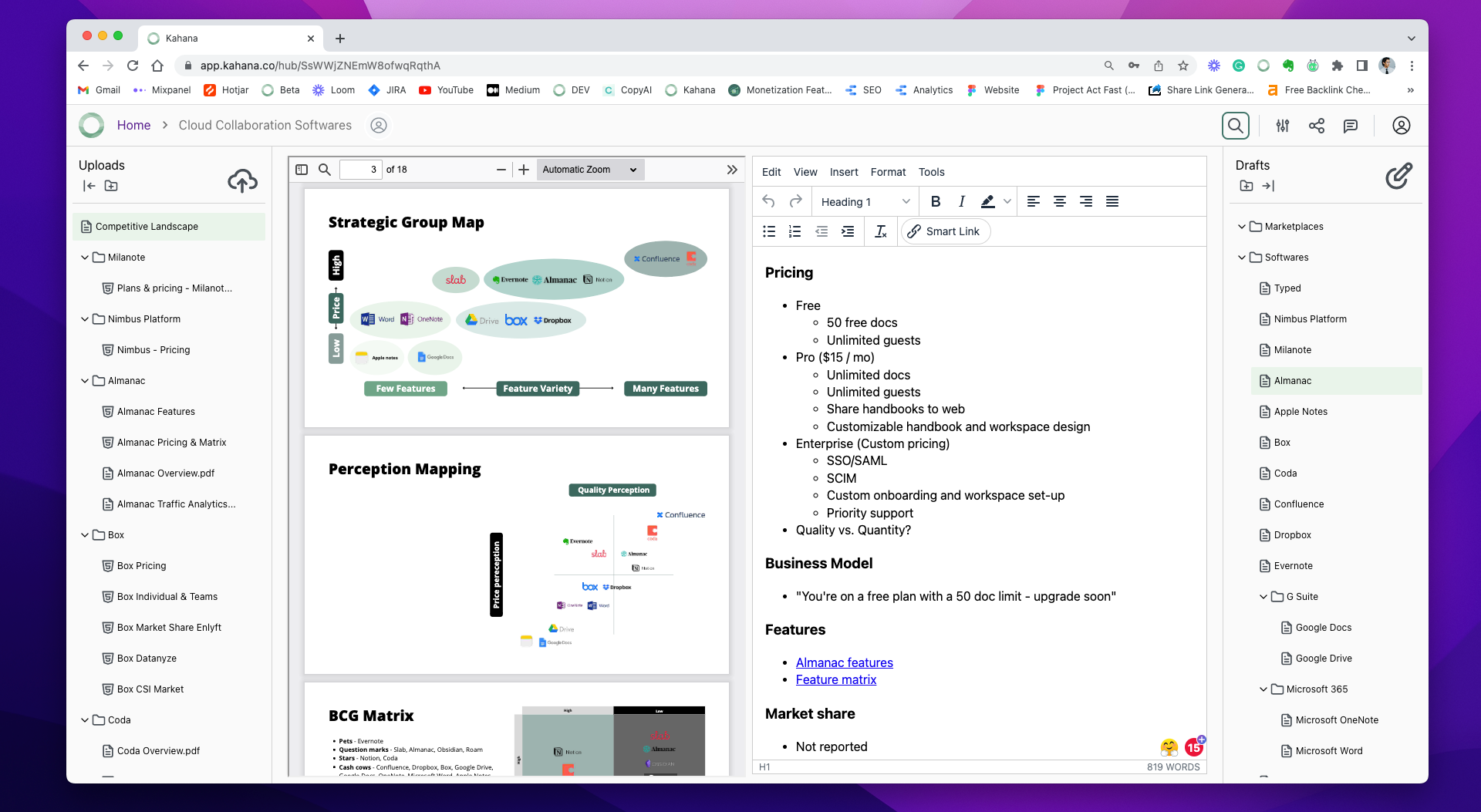Types of Surveys for Research: Ultimate Guide [2025]

Topics covered ✅
- What are the types of surveys?
- Survey research
- Survey research studies
- Types of surveys
If you have any amount of customers, you need to implement surveys in your business. Surveys are one of the most effective methods of conducting research.
They allow you to perform opinion sampling and figure out what your customers think about certain aspects of your business.
The results from surveys can help you make important decisions and modify your product or service to better fit the needs of your customers.
Therefore, surveys are key in brand perception research and customer loyalty research: they help you improve your business to satisfy the highest amount of customers possible and attract new ones.

Claim My Free Surveys Template
This hub is ready-made and pre-populated with free survey templates, lists, and PDFs to help you get started.
1. Surveys
Used in different types of market research, customer satisfaction surveys, and even longitudinal studies, surveys are one of the most common methods of data collection.
When choosing what kinds of questions are best for your survey, keep in mind the purpose of your research.
- Are you trying to learn about customer satisfaction?
- Are you trying to get feedback on a new product?
Knowing what kind of information you want to obtain will help when deciding whether an open- or closed-ended question is best for your needs.
2. Opinions
If you're looking to uncover the opinions of your customers with audience research tools, surveys are a great way to find this key information.
They can be done in person, over the phone, or online.
Each type has its own pros and cons, so it's best to think about which one will work best for you.
Survey research is a powerful tool for gaining insight into customer preferences and opinions. It's also a great way to get feedback on products or services, as well as market research.
3. Market Research Surveys
Surveys are used across various market research methods to collect information from respondents.
They can be conducted in person, by telephone, through the mail, or online.
Market research surveys can give you valuable insight into what customers think about your products or services so that you can improve them accordingly.
4. Population
A survey collects data from a sample of individuals representing a population, rather than from all members of the population.
Survey researchers often want to examine people's opinions on certain matters, measure their knowledge and beliefs, assess their attitudes and behaviors, or predict their future actions.
When you're looking to find out how people feel about a particular product or service, it's important to use a survey that will get the best results.
The first thing you need to do is decide what kind of survey you want to use.
5. Types of Surveys
There are many different types of surveys for research that can help you get a better understanding of your target audience.
Cross-sectional surveys
Cross-sectional surveys allow you to gather information on multiple groups at once (such as men and women), but they don’t provide any longitudinal data (information collected over time).
They're often used for political polling because they allow you to poll people before an election takes place so that you can predict how things might turn out if certain events happen during the campaigning season.
Customer satisfaction surveys
Customer satisfaction surveys help determine how well companies are doing at meeting customer needs. They allow you to measure how happy your customers are at different levels.
To measure customer satisfaction, you can send online surveys to customers immediately when they buy from your business. Encourage your customers to give feedback on their experience with your business and advise how you can improve your business. The results from these surveys can help you create a business that is most suitable for your customers.
Telephone surveys
Telephone surveys are often conducted by phone because they can reach a wider audience than paper surveys can reach with minimal effort on your part; however, they require more effort on behalf of respondents (who must call back).
They allow you to ask questions more directly than in an online survey.
A telephone survey is important in gathering data from large groups of people quickly and easily without having to spend money on postage or printing materials.
According to Chain Store Age, people tend to feel more comfortable answering questions and making purchases on the phone than they do online, so this type of survey may elicit more truthful answers from respondents.
Longitudinal survey
A longitudinal survey is one where participants are measured over time so researchers can track changes over time in their responses to questions posed over multiple interviews or questionnaires administered over time.
How to choose
The type of survey you choose depends on what information you're trying to get from your respondents.
- If you want to know how much people spend on different types of products or services, you would use a market research survey.
- If you want to know how satisfied customers are with a product or service, you would use a customer satisfaction or customer loyalty survey.
- If your goal is product testing market research or to learn more about what kinds of people use your service (or don't use it), then you would use cross-sectional surveys or longitudinal surveys for this purpose.
The target audience for different types of surveys varies widely depending on what type of research is being carried out and who is likely to use them.
For example, if you wanted to conduct segmentation research about consumer preferences for different brands of dog biscuits, then your target audience would probably be owners of dogs who buy these biscuits regularly; whereas if you wanted to conduct customer satisfaction surveys for different gyms, your target audience would probably be athletes and people who exercise regularly.

Claim My Free Market Research Template
This hub is ready-made and pre-populated with free tools, tips, and examples to help you improve your market research.
6. Online Surveys
Online surveys are a great way to get a large number of responses quickly and easily.
You can send them out via email or post them on social media or on your company website.
The downside is that people may not always be honest with their answers if they're unsure whether their response will be made public or what the consequences of this might be.
Online surveys are easy to create and distribute, but they have low response rates because many people don't respond when asked for their opinion over the Internet.
However, if you know how to write an effective survey, you can increase your response rate and improve the quality of your data by including questions like, "How likely are you to recommend our company?" in the survey.
7. Responses
A response rate is the percentage of people who actually respond to your survey. If you have 1000 people in your target audience and 500 complete it, then your response rate is 50%.
If you send out a survey and get 100 responses back, that means that only 1% of your audience responded—and that's pretty low.
So how can you boost your response rate?
One way is to make sure that you're reaching out to the right people with your survey. You should also ask them questions that they will want to answer—and remember: if they don't feel like they'll benefit from answering your questions, they won't bother.
You can use an online survey to collect data from people all over the world, but this method is only effective if you have a strong response rate (i.e., the number of people who complete your survey).
Online surveys make it easier for respondents to express themselves freely, but it also means there's no way to verify whether or not they answered correctly.
Another big problem with surveys is that they can be impersonal—especially when it comes to open-ended questions (questions that respondents can answer freely).
So what's the best way around this?
Try using closed-ended questions (questions with multiple choice answers) instead—this will help keep things professional and formal, which means the respondent will feel more comfortable giving you an honest opinion!
8. Types of Questions
There are several types of questions available:
- Open-ended questions - These allow respondents to say whatever they want in response to the question asked. They may be more likely to provide useful information but can also be hard to analyze because there's no set format for responses.
- Closed-ended questions - These limit respondents' answers to specific choices or options. They're easier for researchers to analyze and compare data from different surveys but may not give as much insight into what people really think.
In short:
- Open-ended questions give respondents the freedom to answer in their own words.
- Closed-ended questions have predetermined answers that the respondent must choose from.
Both types have pros and cons: open-ended questions allow for more creativity and nuance in responses, but they also take longer for respondents to answer because they're writing in their own words; closed-ended questions provide more clarity but aren't as engaging as open-ended ones.
Research surveys are typically designed based on many different types of questions:
- Closed-ended questions (yes/no)
- Open-ended questions
- Dichotomous questions (e.g., agree/disagree)
- Rating scales (e.g., strongly agree/strongly disagree)
- Ranking scales (e.g., 1-5)
- Likert scales (e.g., strongly agree to strongly disagree)
Surveys can also be designed using specific objectives in mind.
This can be seen with brand perception surveys, branding research questions, market panel research, etc.
9. Time
The importance of time in surveys is that the results of a certain survey can depend on what time of year it is.
For example, cross-sectional surveys survey groups at one point in time (e.g., this month) and then stop collecting data until the next year when another group is surveyed again.
This gives researchers an idea about how opinions change over time but it makes it difficult for them to determine whether any changes were caused by something specific (like advertising).
The results of cross-sectional surveys at one time are compared to results with another group later on in order to determine how opinions change over time (or don't).
10. Attitudes
Surveys help you grasp the attitudes of your customers.
You can learn what they like, dislike, and how they feel about your product or service.
If consumers have a positive attitude about your business, they are more likely to stay loyal to it for a long period of time.
Additionally, they are more likely to recommend your business to their friends and family, which will help increase your audience and your revenue.
Adversely, if consumers have a negative attitude about your business, they are less likely to spend money on it and tell others about it.
That is why surveys are important- they let you know which aspects of your business customers feel negative about.
You can use their responses to gauge what you need to work on and formulate a plan to improve the weak spots of your business so that you don't lose customers.
In short, the responses from surveys help you perfect your business to increase the positive attitudes of your customers and generate the most revenue.

Talk with a Kahana representative
Fill out your information and a Kahana team representative will reach out to you. Have a simple question? Search our library of articles
